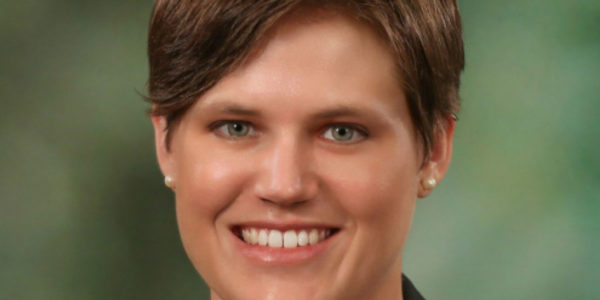![]()
![]()
The procurement process is vital to every department across a university, as every department must make purchases. But rarely do department personnel interact with purchasing officials, much less provide input on procurement processes and decisions.
However, at Washington State University, Pullman, Wash., purchasing leaders have worked to create a culture of more open communication with stakeholders across campus—and as a result, the department has measured more than $2.1 million in savings over the past three years, according to Lauralea Edwards, strategic sourcing specialist at WSU.
Three Bridge-Building Initiatives
A land-grant institution, WSU is home to many faculty members who are renowned in their fields, but its financial processes are still largely paper-based, operating on legacy systems. The disconnect wasn’t lost on staffers in the business and purchasing office—but changing processes and upgrading technology is never easy.
“At Washington State, the biggest obstacles to improving processes and decreasing costs is implementing change that people buy into, and leveraging technology,” Edwards said in a recent interview with NACUBO. “Because higher education is so decentralized, most institutions are really prone to siloing, and when silos go up, it becomes hard to get buy-in on new processes.”
Rather than simply overhauling processes and hoping for widespread buy-in, purchasing staff decided to focus their efforts on breaking down the silos and forging new avenues of collaboration. To do so, Edwards and her team launched three important initiatives: listening tours, a Purchasing Advisory Council, and a vendor performance survey.
1. Listening tours. Two years ago, procurement launched its listening tour project by sending a note to each department, asking for a meeting to help procurement staff learn more about how each department handles purchasing. Each year, the discussions focus on one or two specific areas of purchasing.
At the first few meetings, department representatives were skeptical. “We told people we were just there to learn, but people thought we were there to say, ‘Hey, you’re doing it wrong,’” Edwards says. “As we did more of them and we told departments, ‘No, we really are here to learn from you,’ we’ve started to have more people that have been asking us to come talk to them.”
Procurement staffers strive to keep these discussions informal and focused on each department’s specific concerns. And these face-to-face discussions have been eye-opening, revealing that in most cases, when unusual or unacceptable purchasing decisions were made, “people actually were doing the best they could with the systems and processes,” Edwards says. “We found that usually their behavior was because they didn’t have a system that allowed them to make a different decision. They didn’t have the necessary information to make the best choice, or the processes were so broken that they were forced outside of the system entirely, just to get the process done so that they could continue functioning.”
In addition to forging greater understanding among purchasing staff and departmental staff, the listening tours have also given procurement valuable ammunition for advocating with administrators on the behalf of departments. “Now we can actually say, ‘We’ve talked to departments and this is what they need, this is what they want, and this is what we’re hearing from them,’” Edwards says.
2. Purchasing Advisory Council. Next, procurement started a Purchasing Advisory Council, open to anyone on campus, with quarterly meetings. Currently, there are about 400 people on the listserver who receive PAC announcements, which Edwards says is a good start, but she hopes to grow that number to 800 or 1,000 in the next couple of years.
At each meeting, purchasing staff spend 30 minutes providing “Twitter-length updates” on important procurement developments, such as upcoming changes that will affect departments or challenges with certain processes, Edwards says. The last 30 minutes are devoted to questions and answers: “We ask what’s working well, what issues they have, what questions they want to ask, and it becomes this open dialogue between purchasing and the departments,” Edwards adds. “We’ve been able to hash out a couple of recurring issues that are coming up with certain departments. It’s been a great way to get the communication flowing.”
The meeting room used for PAC discussions technically holds about 50 people, but most quarters, about 70 people show up, making it a standing room–only event. Those attending represent a wide variety of positions, from lower-level department staff to area finance officers (the highest financial officer in each college). “It’s been fantastic,” Edwards says. “We’ve even had a couple other departments come ask if they can clone our format because they like how well it’s working.”
3. Vendor performance survey. Finally, procurement started surveying departments about their experiences with vendors. The purchasing office set up a website that details all the contracts available to campus, and information about how departments can access the contract pricing. “When we get ready to renew a contract that’s available to everyone at the university, we now send out a survey to see how it’s working,” Edwards says. “People seem to like this, as our response rate on those surveys is about 90 percent.”
And the feedback from departments has been valuable. For instance, the first contract for which purchasing sent out a survey, respondents communicated that they were being charged a $40 delivery fee every time they used the vendor. “No one in procurement knew that everyone was getting that delivery fee,” Edwards says. “Through the survey, we were able to figure this out and so we were able to negotiate with the vendor to eliminate those charges, which represented about 50 percent of the contract right there. So we cut the costs on that contract significantly.”
A Work in Progress
Building stronger relationships with departments across campus has allowed WSU Purchasing to record significant savings, but the work isn’t complete, Edwards says. In addition to continual execution of the three strategies already in place, procurement has started inviting department staffers to the table when it’s time to discuss new technology implementations. “We realized that if we wanted buy-in on the technology, we needed to make departments our partners,” she says.
The purchasing office continues to experience positive results on projects ranging from streamlining the use of purchasing cards to implementing a new digital contract management system. “Now we’re inviting the departments in from the beginning and they help us build the requirements upfront [for new processes],” Edwards says. “So we understand what their world looks like on a day-to-day basis and how they’re using technology. This is where it comes back to building those partnerships and doing things such as listening tours, so departments feel like we’re working in their best interest and we’re not trying to make their lives more difficult.”
To start breaking down silos and build stronger relationships across campus, Edwards recommends that business officers start by “keeping it simple” and relying on word-of-mouth for your intentions to travel across campus.
“Take every opportunity you can to get out of your office and start meeting with other people where they are and make connections,” she says. “Get some visibility with those departments and ask them to connect you with other departments if you don’t feel like you have the ability to get into those departments. Just making an effort makes a difference.”
NANCY MANN JACKSON, Huntsville, Ala., covers higher education business issues for Business Officer.




